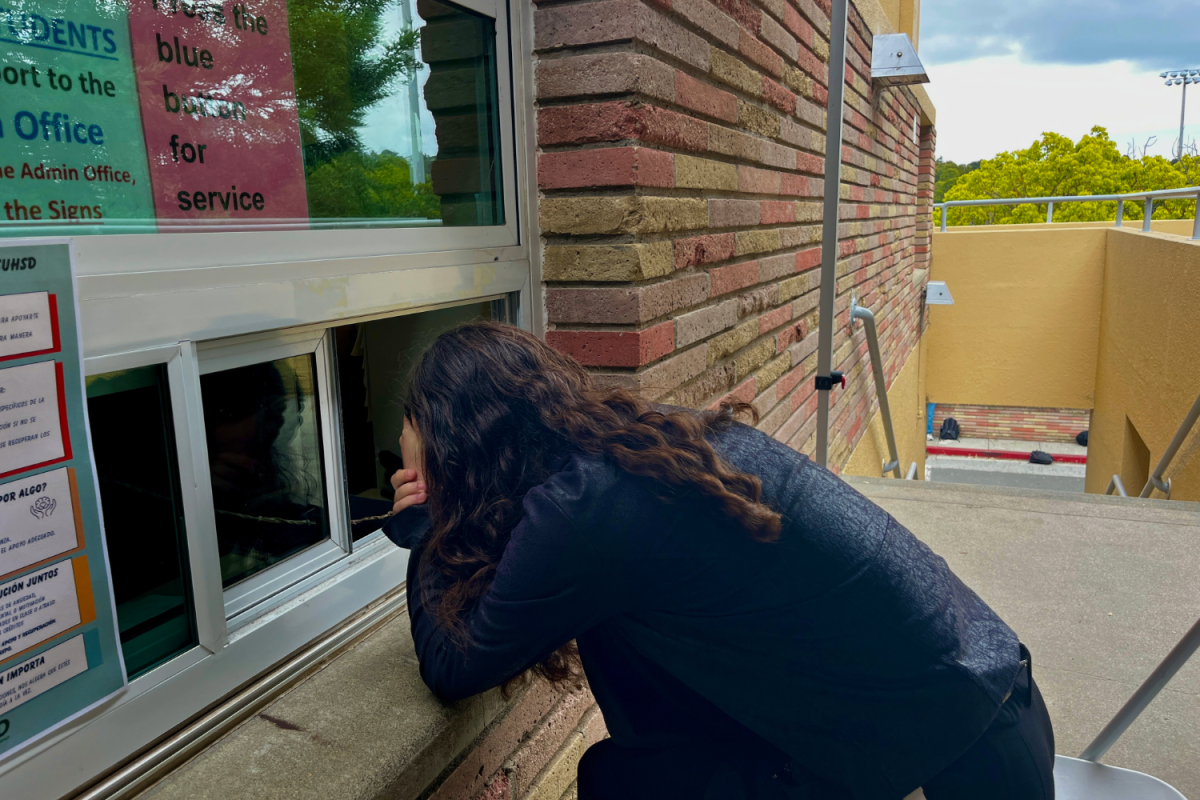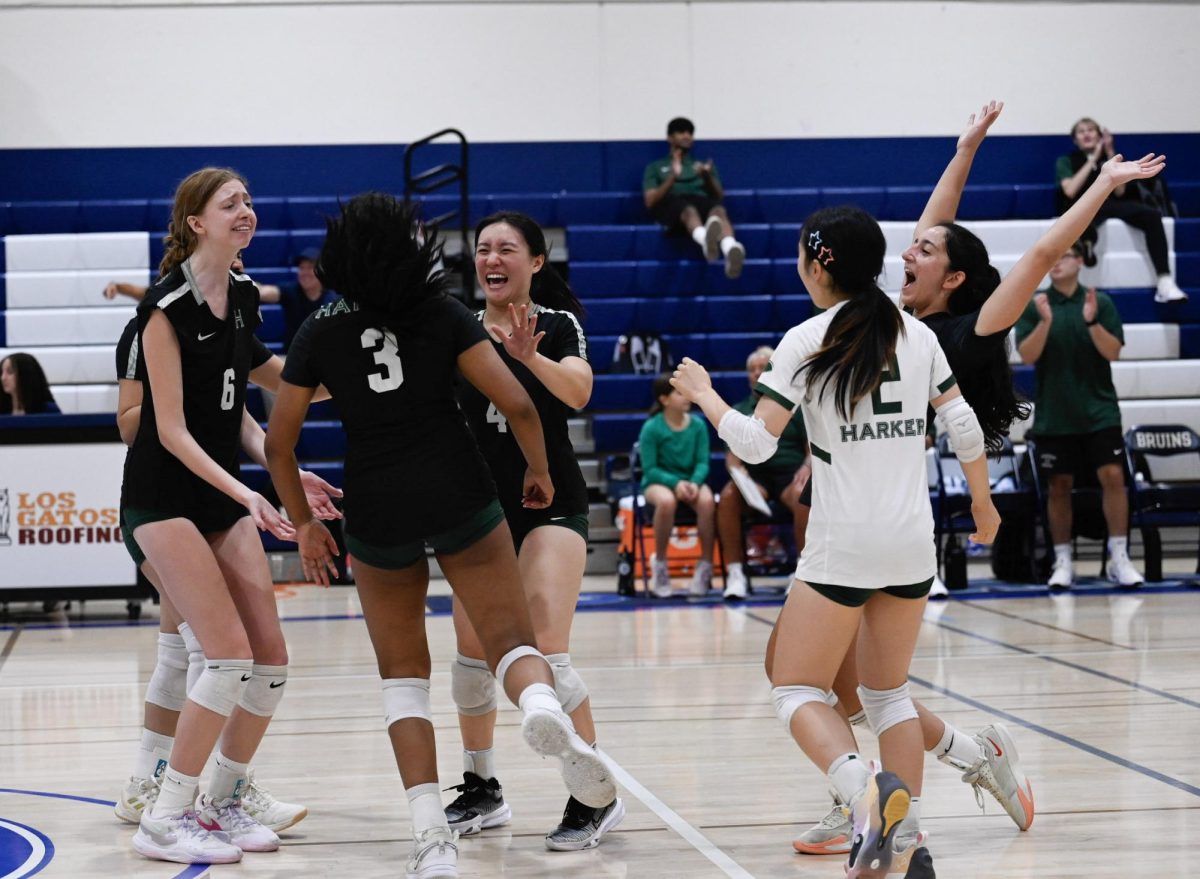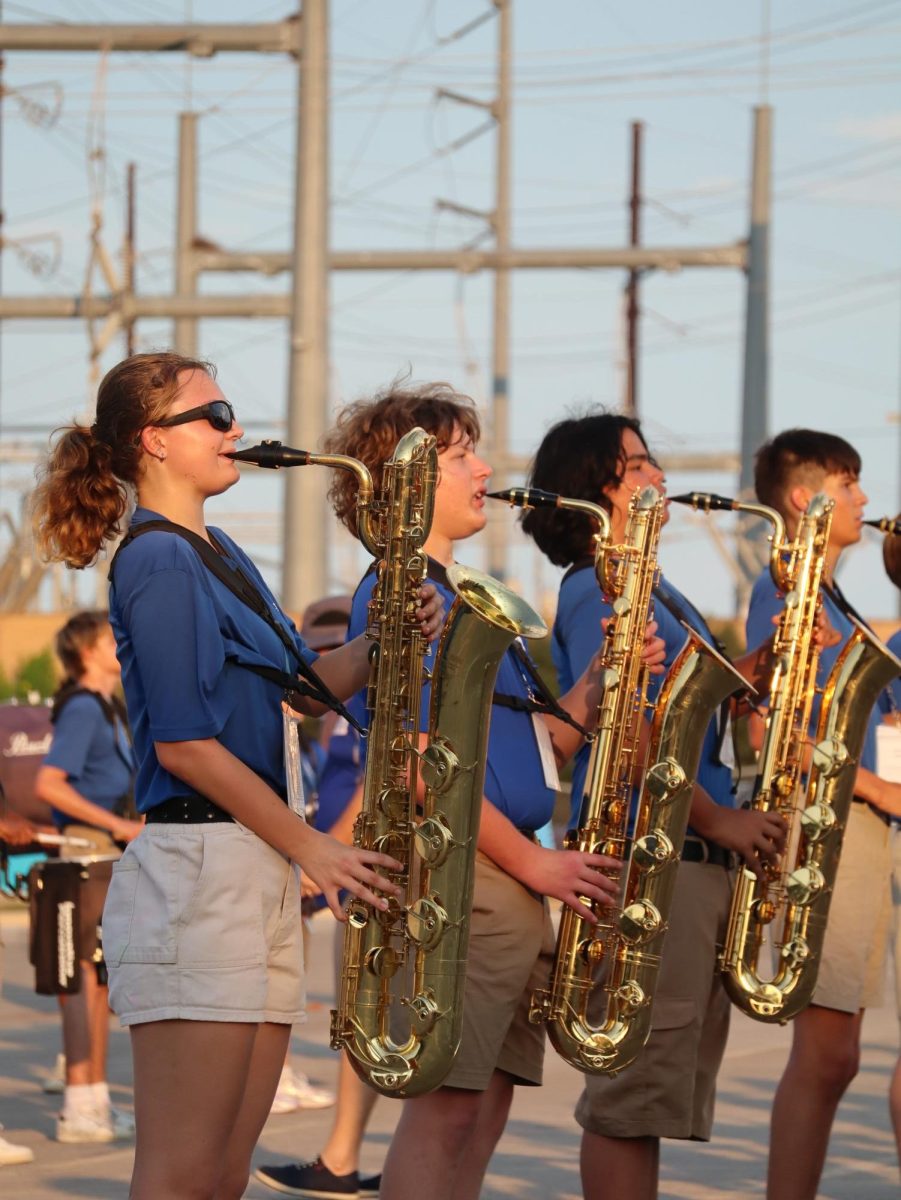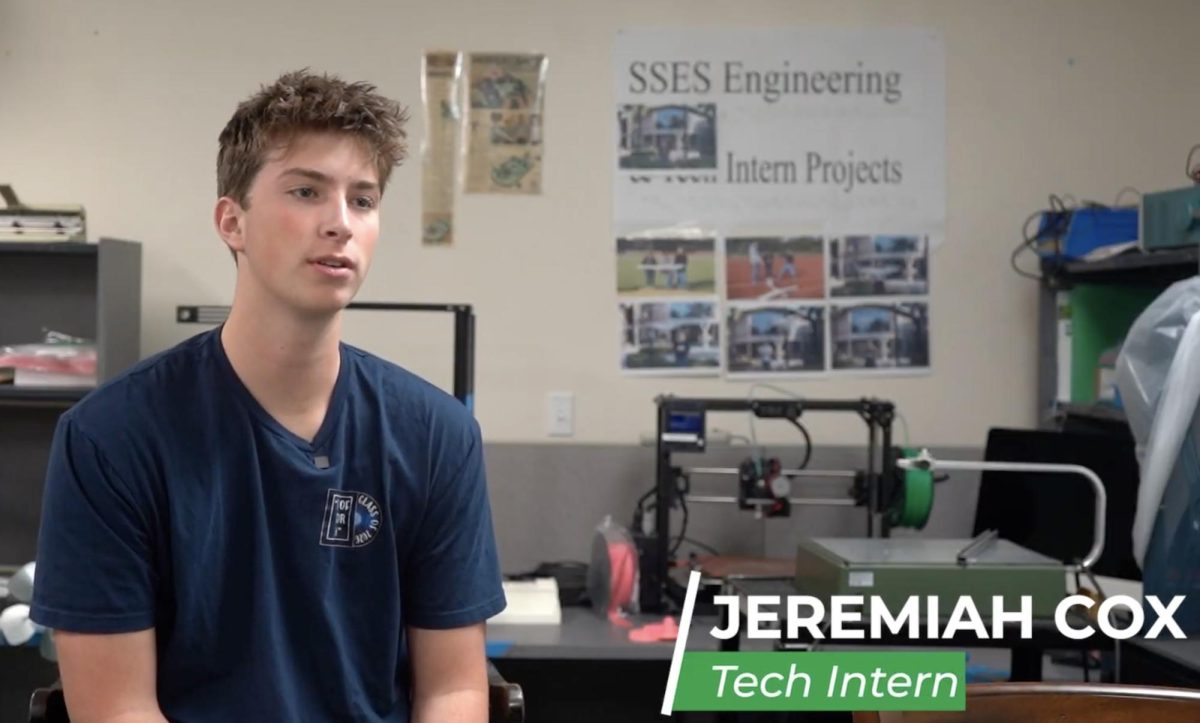A School Upon a Hill?
For the past 10 years, The School District of Clayton has neglected a key component of staff pay to the detriment of students, teachers and parents.
Marci Pieper
Carroll Lenhoff-Bell, Director of Learning Support at Clayton High School, working with student.
November 22, 2022
In 1630, John Winthrop, former Governor of the Massachusetts Bay Colony, described a “city upon a hill.” Winthrop hoped that his colony would be a model community, for “the eyes of all people are upon us.”
Clayton, since 1908, has viewed itself as a “school upon a hill,” a model for schools across the region and the country to follow. However, for at least the past decade, the vision of being a school upon a hill has begun to falter, as a key component of staff pay, and a key tool for recruitment, has been neglected.
When members of Clayton High School’s (CHS) robotics team (The RoboHounds or Team 4500) returned to school from summer vacation, they were expecting a typical robotics season. This year would prove to be anything but typical.
Early on in the year, Stephen Beauchamp, the robotics coach and CTE curriculum coordinator for the district, announced that the program would have to be scaled back significantly.
“Last year we were able to go to two regionals […], this year we can only go to one regional,” said Henry Shook, CHS junior.
CHS’s robotics team has long been a staple of its extracurricular offerings.
Since their inception in 2013, the RoboHounds have had remarkable success locally, regionally and nationally, frequently placing in the top 50 in the entire world.
The RoboHounds are also a favorite among students.
Shook notes that “robotics are fun” and “it builds community.”
Sanjana Chanda, CHS junior, said, “You learn so much from robotics […], it’s not only engineering.”
The robotics team, since its inception, has had challenges with pay.
“Our program is based on volunteerism,” said Beauchamp in an earlier interview with The Globe.
“When we first started this team back in 2013, we only had about 10 kids, and we didn’t start the season until January and we did one competition ending in March. So, that was what they [the district’s HR] put us at for our coaches. Now, since that time, we have grown significantly. We’ve gone from 10 kids, to 70. We’re doing two events and traveling, and if we win one of those events, which we have multiple times now, we’re going to World Championships, that’s a whole other journey. Now instead of just being January to March, we are August to May,”
As the team has grown, the amount of time required to run the team has increased as well.
“We start designing and building in January, and we’re usually done with the build into February. To do that, it takes us pretty much every night after school until about six o’clock and we also work all day on Saturdays. If we have days like Martin Luther King Day or whatever, we usually go ahead and come in all day and work on those as well. So I think last year, it was over 350 hours with students … putting together all of our curriculum, and planning time … a typical season would be an easy 500 hours or more,” Beauchamp said.
Beauchamp co-runs the team with two assistant coaches, physics teachers Gabe de la Paz and Jennifer Adams.
Gabe De la Paz’s stipend is $1983 for the season. Adams receives a stipend of approximately $3200. Based on Beauchamp’s 500 hour estimate, Adams receives an hourly wage of $6.40.
The Missouri minimum wage is $11.50 an hour.
In an earlier interview with The Globe, Adams said, “the coaches are concerned that the way we have been running Robotics is not sustainable… so when we go, and we won’t be here forever, the program will not sustain. The resources aren’t there. For a nationally recognized program to run, the district can’t assume that volunteers and parents are going to do it. I don’t know a profession where people would do that. When people do things pro bono, they do it because they love what they do. If you take the key people that care about it out, it falls apart, there is no program anymore.”
Beauchamp agrees.
“I think it’s an amazing program for our kids, and I’m willing to continue that. I want to continue. The problem is that we want to build sustainable programs … I don’t want this to just go away. Imagine coming and saying hey, I need you for 500 hours for this much money. They’re gonna be like, no way. So that’s the problem. Like, we want it to be sustainable. We want it to continue. We want it to keep growing, but it’s totally dependent on us right now. It’s totally dependent on our volunteerism, to be able to move on.”
With the stipends remaining low the coaches have had to change tactics.
“We kind of have stepped back last year because we’ve been asking for this [stipend changes] for so many years, and not having any kind of luck with it. It is not about the money and I don’t want it to look like it is, it’s because I love the program,” Beachamp said.
In the 2021-2022 school year, the School District of Clayton in its budget, set by the Board of Education, approved $1,373,000 to be spent on student activities: they spent only $822,000 or 59.99% of the allocated total.
John Brazeal, the district’s interim CFO, said that expenditures should be within 2% to 3% percent of the allocated total and at the very most five percent.
“If I get inside 2% I’m happy, If I’m inside 3%, I’m okay and if I’m off by 5%, I really need to think about that further.”
He notes that this line item was likely padded, and that activities tend to have volatility. Clayton, however, was the only district in The Globe’s examination of school budgets in the St. Louis region to have this disparity.
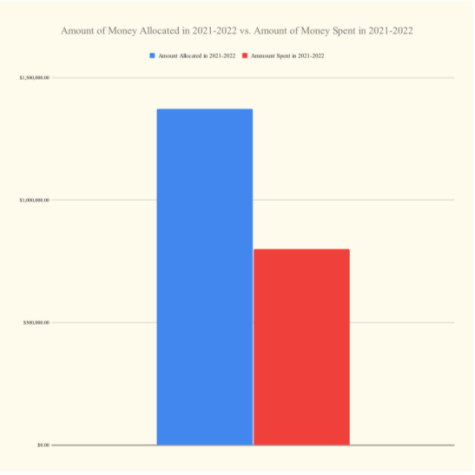
For the 2022-2023 fiscal year, the district chose to follow the example of the year before and keep the total amount allocated to this category relatively the same at $1,383,000.
The money that was not spent gets rolled over to next year to pay for unexpected costs. However, while the gap between the amount of money allocated vs. the amount spent grows, programs, like robotics, continue to face cuts because of unresponsive administrators, and teachers continue to earn wages far less than competitors locally and nationally and, in some cases, below the federal minimum wage.
“Clayton prides itself on being basically number one in most of those [lifetime pay, total compensation, progress through schedule and other benefits] compensation categories for teaching,” said Dan Gutchewsky, CHS Principal.
While this is mostly true compared to our market districts but not always, the School District of Clayton has neglected a key component of staff pay: part-time temporary employment.
Part time temporary employment or PTTE is the term used by the district to describe the ancillary pay that teachers and staff receive for jobs such as curriculum and college recommendation letter writing, leading clubs, coaching sports, and participating in workshops and professional development.
Brazeal describes it as, “compensation for extra duties, beyond their teacher contracts, those extra duties, coaching, etc.”
Clayton, for the past 10 years, has neglected this key part of staff pay, while at the same time increasing expectations for teachers and staff alike, creating a culture of more for less.
PTTE plays an essential role in the school district, especially at the high school where many teachers receive at least one PTTE contract.
Daniel Glossenger, the AP economics teacher at the high school and former assistant speech and debate coach, dedicated large amounts of time to his assistant coach role.
“I was working around a third to half of the weekends that I had available during the entire school year, which meant that I was working from Friday at three o’clock until Friday at 11, and then I was getting up and working from seven in the morning until possibly 10 at night on Saturdays. It was grueling for even a young person. And so, it became very, very difficult to physically even do that job and show up for those weekends. I also gave up about 10 of my 60 days of summer. Of those 10 days, I was on call the entire 24 hours,” said Glossenger.
Clayton’s Speech and Debate Program is one of the most successful in the State of Missouri and the entire country. Each year around 100 students participate in multiple tournaments held throughout the academic year beginning in October and ending with the NSDA (National Speech and Debate Association) National Tournament in June.
The program is also important to students and parents alike.
Julie Cohn, CHS parent, whose children both participated in the debate said, “these extra curricular activities have been so beneficial to both of my kids’ experiences at CHS … Their involvement in these activities has made their high school experience so much more fun and meaningful and helps them be prepared for leadership roles later in life.”
Carroll Lenhoff-Bell, CHS’ Director of Learning Support, who runs the Learning Center, plays an important role in the high school community. The Learning Center, according to Lenhoff-Bell, is a place where students can receive “individualized support in a positive, academic environment where students feel at home.”
It is also an integral part of many high school student’s careers.
“The Learning Center helped me with all my classes through the four years I’ve been in high school,” Gabriella Broussard, a CHS graduate said in an interview with The Globe last year.
“I built a very good relationship with Mrs. Lehnhoff-Bell and Mr. Jamison, who helped me battle tough college prep classes such as Algebra, Chemistry and English,” she said.
Lenhoff-Bell, in her role as Director of Learning Support, serves on the administrative team, as well as one of the department chairs at the high school. In this capacity, she participates in and helps plan meetings and retreats, works on presentations, supports the members of her department, as well as other faculty at CHS.
Unlike the other department chairs, Lenhoff-Bell does not receive a stipend. Lehnhoff-Bell notes she does receive additional flexibility in her schedule, unlike other staff members, but does feel like the system has issues.
“Please don’t mistake conversations about compensation to mean that teachers aren’t kid centered or that we don’t love what we do. We are and we do. I would like conversations where teachers aren’t made to feel guilt or shame for asking about compensation for their expertise, their time. Or made to justify their worth. They are worth it,” said Lehnhoff-Bell.
One of the most important duties Carolyn Blair, longtime CHS counselor and Director of the Counseling Department, does every year is write individualized counselor recommendation letters for half of the student body.
These recommendation letters are highly valued by many colleges and universities across the country, who often place a great deal of weight in the acceptance process to letters of recommendation. In any given year she writes close to 100 letters, which takes, on average, two hours to complete for a total of 200 hours a year. For her work, she receives a 600 dollar stipend or $3 an hour.
“Everyone’s here because they like working with kids and students, and they enjoy that. Nobody is here because they want to be rich. When you have that passion you are willing to go the extra mile for someone, but all of a sudden when you look up, you start to wonder if this is some sort of indentured servitude,” said Blair.
Nathan Peck, Clayton High School Chemistry Teacher and Science Department chair, serves as the sponsor of the rocketry team.
This past year, the team made it to the national competition in Washington DC where they competed against the best schools in the entire country. They were ranked in the top 15.
He notes, “it [Peck’s stipend] comes out less than a professional salary. It’s not less than minimum wage, but it approaches minimum wage. I pay my dog sitters twice what I make,” said Peck.
Some teachers that wished to speak to The Globe anonymously about their extra duty contracts, indicated that when it came to sponsoring clubs, coaching or serving on committees, often they paid their babysitters more than their own hourly compensation for those roles. They also felt that since serving on extra committees was a factor in the evaluation process, that the architecture of the system made them feel as if they were being taken advantage of.
Many of the issues facing PTTE in the district can be attributed to the fact that Clayton lacks a simple, codified way to decide pay for PTTE contracts. In many school districts, PTTE is part of a collective bargaining agreement between the teachers unions and the district. Clayton has no such agreement. Clayton’s unions, NEA and MSTA are relatively weak compared to other district’s unions.
“Historically, unlike other school districts, our chapters (NEA and MSTA) were less active in general because there were strong relationships between the Board of Education, the administration at Central Office, and Clayton’s teachers. When I first was hired, most teachers knew most Board members by name and there was a lot of trust and good will built up between the three groups, so there wasn’t as much of a need for a strong union presence to mobilize teachers or have collective action campaign,” said Josh Meyers, CHS History Teacher and Social Studies Department Chair.
Blair agrees, recalling “if you didn’t come to Clayton, it wasn’t about the money. Period.”
Over time, however, as Clayton’s pay has decreased, the issue of transparency has grown in prevalence.
“The way that the pay schedule was constructed was always opaque to me. It was never clear how much money I was supposed to be earning or whether I was being moved up because of my experience. So I never necessarily felt like the compensation aligned with the work that I was doing,” said Glossenger.
This sentiment was shared by many teachers who chose to not speak on the record.
Tony Arnold, Assistant Superintendent of Human Resources, said, “some PTTEs are flat stipends, and some are on a point system. Additionally, there are PTTEs that have a formula similar to a sliding scale approach. The current PTTE payment structures are fairly complex because it depends on each category of the PTTE, depending on which payment structure on which it is placed.”
In the point system, each point is worth $152 and one can earn a maximum of 60 points for a maximum total stipend of $9,120. One can also receive, according to Arnold, an additional $39 per point for experience. He notes that stipends on the point system can adjust periodically to inflation, the other categories, however, do not account for inflation.
Blair’s stipend for college recommendation letters, is one of many examples of stipends that have remained stagnant or hardly adjusted for inflation. Since August 27th, 2008, adjusting for inflation, Blair’s stipend has decreased in value 26 percent from $812 to $600.
Elizabeth Caspari’s, World Languages Department Chair, stipend in August of 2007 for her position was $3360. In August of 2022, her stipend was $3250. Adjusting for inflation, Caspari’s stipend has decreased 31%.
The District maintains, however, that all salaries and stipends are “fair, competitive and equitable.”
Clayton’s convoluted and complex stipend allocation system is not used in other school districts across the St. Louis region and the country.
In a statement to The Globe, Christina Testa, the Substitute Coordinator for Human Resources in the Kirkwood School District said,“Kirkwood uses a point system to determine pay for extra duty activities. Each point is worth $151.00. Extra duties are given points based on the time and effort the activity takes as well as how many students are tied to it, and the level of coaching, such as Varsity vs Junior Varsity. Then there are experience points given. For example, an employee coaching as the Head Coach for Varsity Football could get a possible 49 points for the position and up to 15 points for experience, for a total of 64 points. $151.00 x 64 points = $9,664.”
Nicole Dizon, Director of Communications and Alumni Relations for the New Trier School District in Illinois (ranked the seventh best school district in the country and second best district to teach in by Niche), said, “Generally, stipends are assessed a letter category on the stipend schedule based on a variety of factors such as how often clubs meet, the number of students enrolled, is travel or competition required, etc.”
At New Trier, their stipends are determined as part of their collective bargaining agreement between the teacher union and the district and follow a schedule, like the one Clayton uses for general pay.
At Ladue, stipends are agreed upon by the Ladue Educators’ Association (LEA) and their Board of Education as outlined in their master agreement.
According to that agreement, “A range system using Steps 1-10 of the Master’s Track from the teacher salary schedule will become the base amount used to calculate stipend amounts. The comparable school district data determined a multiplying percentage for each stipend position. The multiplying percentage was applied to the base amount to create the actual ranges for the stipend positions. All amounts will be rounded to the nearest whole number. As an example, the multiplying factor for a head soccer coach is 10.5%. This was applied to MA Track, Step 1 in the amount of $47,047 to create a minimum stipend of $4,940. The overall range for a head soccer coach will become $4,940 to $6,241.”
Clayton has since formed a committee to look at PTTE in the district and has hired the consulting firm CBIZ for their advice at the cost of $7,500.
“I think we need to take the time to review it now because it’s been several years since the committee has come together. I think nearly 13 years since the last time a PTTE Committee was formally brought together, so it’s definitely time to revisit. The PTTE Study Committee held our first meeting back in September, and our next meeting will include our representative from CBIZ. The representative will provide the committee with an overview of the scope of services that they are going to provide. It is essential that we are closely reviewing our data to ensure that we are being fair, equitable, and competitive with our market districts,” said Arnold.
Dan Gutchewsky, a member of the PTTE Study Committee, agrees, “the first thing we want to look at is to make sure that we’re being equitable within the district, so similar positions are being compensated in the same way…. I also think that we want to make sure that we’re competitive with our market districts.”
A fear that many teachers expressed about the PTTE review was that Clayton’s view would focus solely on market districts and not take into account the national competition, which has been the shift they felt led to a practice of complacency over the last decade.
In August 2022, Clayton put out an official notice that it was hiring for the role of a new assistant speech and debate coach. It took nearly three months to find a candidate, despite Clayton having one of the best speech and debate programs in the state. Due to challenges in finding talent, cuts have had to be made.
The award ceremony for the Clayton Fall Classic (Clayton’s home speech and debate tournament) might have to be moved to Ladue because of staffing problems. The problem of finding quality staff goes beyond programs like speech and debate. Throughout the district, it has been challenging to hire and maintain teachers because of limited stipends.
“Several positions this year have been a little bit more challenging to fill due to, I think, mostly due to the nationwide labor shortage. We’ve also had some turnover, and with some individuals choosing to do different things for various reasons,” said Arnold.
Since Glossenger left the position, the stipend remained unchanged.
“I know of people who decided not to work at Clayton because of the pay. And those people chose to remain in their current positions, because the pay wasn’t going to be enough to get them to leave,” said Glossenger.
Blair has seen this as well.
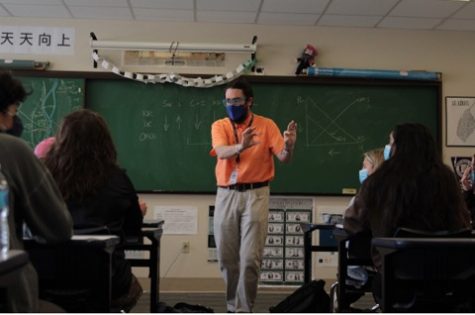
“It seems we almost have a policy of anti-recruitment. Are we trying to recruit the best teachers, are we trying to look for people that are at the top of their game and then recruiting them to come here, or are we just going on MOREAP (Missouri Regional Education Applicant Placement) and hiring whoever’s in there or saying we want the best people, but we don’t have any money? Because guess what, you pay peanuts, you get monkeys,” said Blair.
Clayton, in its mission to stay “fair, competitive and equitable” looks to its market districts to determine stipend and salary amounts.
“Clayton utilizes our seven market districts for comparison purposes: Brentwood, Webster Groves, Kirkwood Parkway, Pattonville, Rockwood and Ladue. So those are our seven market districts and we use for PTTEs and for many other comparisons. We use those market districts here in the region when we look at teacher salaries, benefits, leave benefits, insurance, contract days, paid holidays, work days and school calendars,’’ said Arnold.
Compared to these schools, however, Clayton pays far less, oftentimes for more.
In the Kirkwood School District, their yearbook advisor and newspaper advisor receives a stipend of $10,268 for each one of those roles for a total of $20,536 for both roles. In Clayton, the yearbook advisor and newspaper advisor both earn $6,583 for a total of $13,166: a 36% difference.
Both programs at the two schools are roughly comparable in size and quality.
Recently, The National Scholastic Press Association announced that both Kirkwood’s The Call newsmagazine and Clayton’s The Globe were finalists for the prestigious Pacemaker award (the highest award in scholastic journalism). The two schools were the only schools in Missouri to be awarded that honor.
For the role of department chair, the starting pay according to documents obtained by The Globe at Ladue, is approximately $5000. At Clayton, the average department chair stipend is around $3860.
Clayton, unlike other school districts, has national ambitions.
On Tuesday September 22, the company Niche released its 2023 rankings of the best schools and school districts in the country. Clayton in this year’s rankings was called the best school district in Missouri, and the 13th best in the country.
Clayton officials wasted no time sharing the news with the wider community in multiple different social media posts, website postings, and letters.
Clayton’s relative success echoes a historical mindset of Clayton being a “school on the hill”: a model for all nearby schools.
However, when comparing Clayton to our competitors nationwide, the disparities in pay are even greater.
In the Glenbrook School District in Illinois, ranked number two in the country by Niche, the Head Speech and Debate Coach earns $17,656 per year while assistant coaches earn $10,777.
At Clayton, the Head Speech and Debate Coach earns $7,000 per year.
Glenbrook’s program is, like Clayton’s, nationally renowned. They both performed well at the NSDA (National Speech and Debate Association) National Tournament in Louisville, Kentucky and are among the top performing teams in their respective states. The hours that the coaches work is also very similar, according to documents obtained by The Globe.
The largest difference between the two programs is simply the pay. Adjusting for a 9.3% increased cost of living in Glenview, Illinois there is still a difference of 55.6% between the two schools.
At New Trier, the base stipend for the role of department chair is $8,553. Adjusting for the same 9.3% increased cost of living, compared to the average department chair stipend of around $3860, New Trier pays 50.6% more. While providing comparable education between the two schools, Clayton pales in comparison when examining pay for extra responsibilities.
Clayton has, over time, taken a more localized approach to its pay and hiring philosophy.
Historically, Clayton had a program known as Project Blueprint in which district leaders would look to other leading schools across the country and try to replicate what they were doing
Clayton today has no such program.
Blair in her tenure has noticed a shift in culture in the district.
“Philosophically, it was like, we want Clayton teachers to go train somewhere else, be at the top of their game and then we’re going to steal them. I remember literally just being in meetings where that was just sort of just outwardly, unabashedly said. I don’t know what the philosophy is now,” said Blair.
Brazeal, however, notes that Clayton employs practices that other schools don’t,“we pay virtually every staff member, whereas often, clubs are done on a volunteer basis in a lot of districts.”
The Globe has not found evidence of this practice [volunteer basis] in our market districts or other districts in Missouri. Arnold also said that Clayton “is the top paying school district in Missouri.” The Globe has been unable to back up Arnold’s claim.
On average, both the Kirkwood School District and the Ladue School District pay their teachers more than Clayton does.
For the 2022-2023 school year, the average difference between values on the Kirkwood pay scale is 1.25% higher than Clayton, while at Ladue this figure is 1.35% larger. This becomes especially notable as Ladue’s extra duty stipends are directly determined by a teacher’s pay on the salary schedule.
Further, Clayton’s stipends are less than other districts bringing net pay to less than competing schools. Clayton’s benefits also are less in some cases than some of its competitors.
When looking towards increasing one’s pay on the schedule, Brazel notes that ultimately teachers have the agency to move up in the salary schedule by getting more education, “they [teachers] do have the initiative to increase their credentials and change channels.”
However, Clayton makes this process harder than some of our market districts in the region. As part of the employee compensation package, Clayton reimburses tuition for higher education at $1000 a year.
At Ladue, as of the 2022-2023 school year, they reimburse $3500 a year. A 350% difference. The average tuition at UMSL is $11,554 a year. The disparity between the amount Clayton pays and the cost of tuition at schools like UMSL have been prohibitory for many teachers.
The issues with pay reflect the growing reality of teachers turning to jobs outside the teaching field where they can make more money.
The starting salaries for jobs in Amazon warehouses are $19 an hour plus benefits like health care and stock options, more than four times the amount teachers like Adams, Blair and other faculty make for their extra duties.
“If I had known in 2014 what was going to happen in the next 10 years of teaching and education I would have left teaching right away. I would have found a job outside of the field. I love teaching and the students who are in my classes. I love getting to know them. But it’s the cultural changes, the slow erosion, not just pay, it’s a holistic package. So the cultural changes and the holistic erosion of benefits and compensation would definitely have made me change my mind. If I could go back to college I would have changed majors,” said Glossenger.Clayton historically has been a school upon a hill: a model for schools across the region and across the country to look towards. Over time, however, it appears that Clayton has lost sight of this ideology.
“We’ve grown complacent with being roughly equivalent to the better school districts in St. Louis County. Whereas I think 10 years ago the ethos was we need to be a head and shoulders above the better school districts in this county to distinguish ourselves from them, so that we are recruiting a distinguished and talented workforce. And I think that over time it’s become we are about the same as Kirkwood. We are about the same. And so, that’s good enough. That’s what I’ve seen over the last 10 years is a shift towards good enough,” said Glossenger.
As Clayton stipends careen towards uncompetitiveness, not just nationwide but locally, challenges will likely to continue to ensue as the issue of PTTE pay goes far beyond the walls of the school community.
Kelley Karandjeff, CHS parent and alum, said, “if teachers are your most valuable asset and the district wants to maintain a certain level of quality and engagement on the part of their faculty, then that would seem, to me, that this (PTTE pay) should be addressed.”
Karandjeff’s point is essential. Since the quality of the school district is tied to the quality of the teachers, and Clayton residents’ property values are inextricably tied to the quality of the district.
As the CHS robotics team enters its 9th year, the future of the program remains uncertain. As long as stipends remain low, the program will not be able to operate in the way that a world-renowned team can.
“If Clayton wants to be a school that focuses on academics, they need to fund robotics,” said Chandana. Shook agrees, “We just need the school to support us.”
As Adams noted, “it’s unsustainable.”
This story was originally published on The Globe on November 17, 2022.

